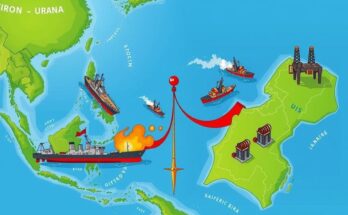Burundi’s main languages are Rundi and French, with a significant role for Swahili in trade. Predominantly Christian, the country faces historical ethnic tensions between Hutu and Tutsi. Its economy is heavily agricultural, particularly in coffee production, but plagued by poverty. The nation’s demographic challenges include a youthful population and low life expectancy, while unexploited mineral resources present potential for growth.
Burundi recognizes Rundi (Kirundi) as its primary language, with French also playing an official role. Swahili, prevalent in trading contexts, is widely spoken in urban areas like Bujumbura. Both Hutu and Tutsi communities commonly communicate in Rundi, contributing to linguistic unity rare in sub-Saharan Africa.
Christianity is dominant, with about 60% of the population identifying as Roman Catholic and a significant Protestant minority. A portion of these individuals practice traditional religions, while Muslims represent a small fraction. Tensions between the church and state have existed since the 1970s, particularly due to perceived biases towards the Hutu by church policies.
Burundi’s hilly terrain leads to dispersed settlement patterns, tending to isolate communities and intensify ethnic conflict between Hutu and Tutsi. Urban centers are few, with notable locations including Bujumbura, Gitega, and Muyinga. Civil unrest in the 1990s forced many Hutu into refugee camps, while Rwanda’s genocide prompted an influx of refugees into Burundi.
The nation experiences high birth rates, with over 40% of the population under 15 years old. Though life expectancy is low by global standards, it aligns with the average for Africa. Conversely, the country struggles with poverty, primarily due to civil conflict and economic challenges.
Agriculture remains Burundi’s economic foundation, contributing to less than 25% of the GDP from industry. Coffee serves as the leading export crop, followed by tea and cotton. Economic sanctions imposed following a Tutsi-led coup in 1996 impacted trade significantly. Although recovery began in the late 1990s, progress has been gradual due to ongoing struggles with poverty.
Approximately 50% of Burundi’s land is cultivable, with major food crops including beans, maize, and cassava. Coffee production rebounded after significant declines in the 1990s. While livestock density is high, it often leads to overgrazing, with very little commercial value from this sector. Fish from Lake Tanganyika contributes to food sources, despite a diminished forest area.
Burundi’s unexploited mineral wealth includes substantial nickel, vanadium, uranium, and phosphate reserves. Limited mineral production is evident, focusing on niobium, tantalum, gold, tin, and wolframite. Local energy largely derives from hydroelectric sources, supplemented by imports.
Understanding Burundi involves exploring its linguistic, religious, social, and economic structures. It is a small, landlocked country known for its ethnic diversity and historical conflicts. The prominent agricultural economy heavily influences demographics, with agriculture being crucial for survival and international trade. Furthermore, the interplay between church and state has undergirded ethnic tensions affecting the nation’s development for decades. Burundi’s rich natural resources hold potential for growth yet remain largely untapped due to ongoing challenges.
In summary, Burundi is characterized by a unique linguistic landscape and a predominantly Christian population amid historical ethnic tensions. Its economy relies heavily on agriculture, particularly coffee, despite facing significant poverty and civil unrest. The country’s demographic trends show a youthful population, with challenges tied to low life expectancy and a high birth rate. Although natural resources exist, their exploitation is limited, contributing to the slow economic recovery post-conflict.
Original Source: www.britannica.com




